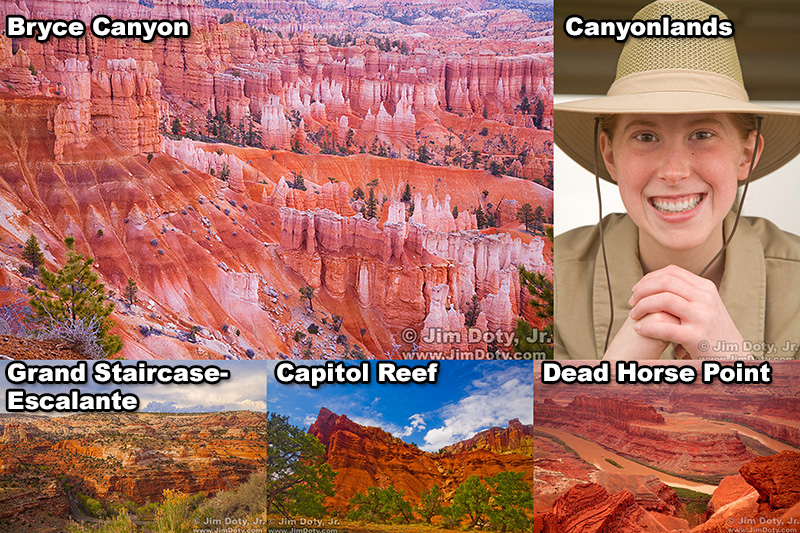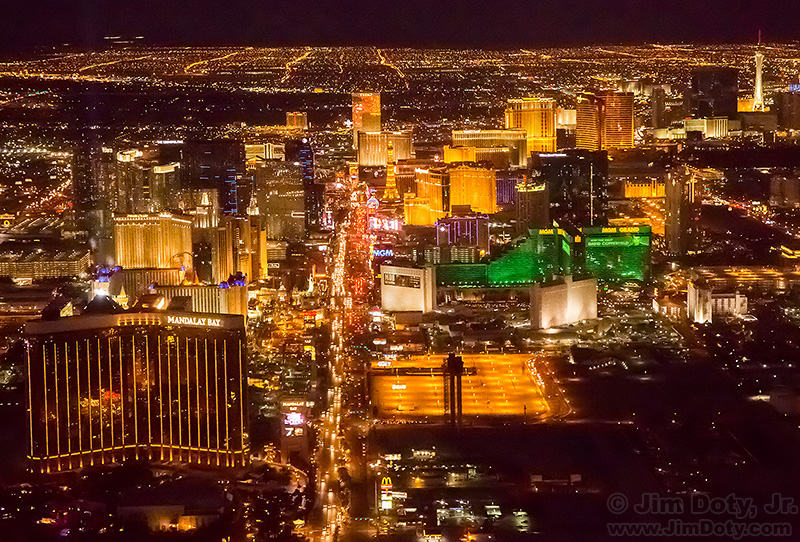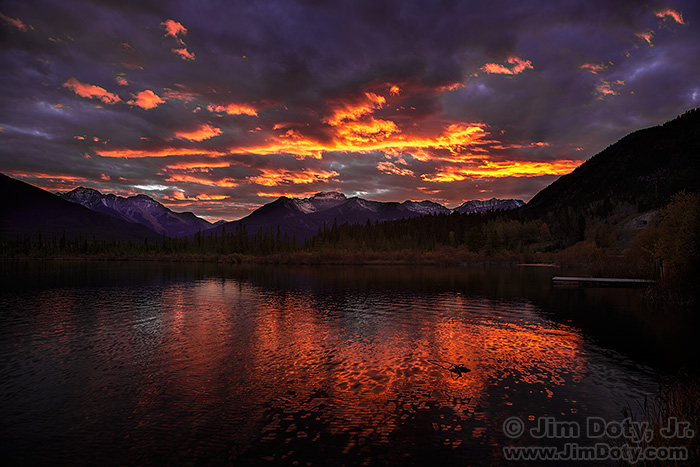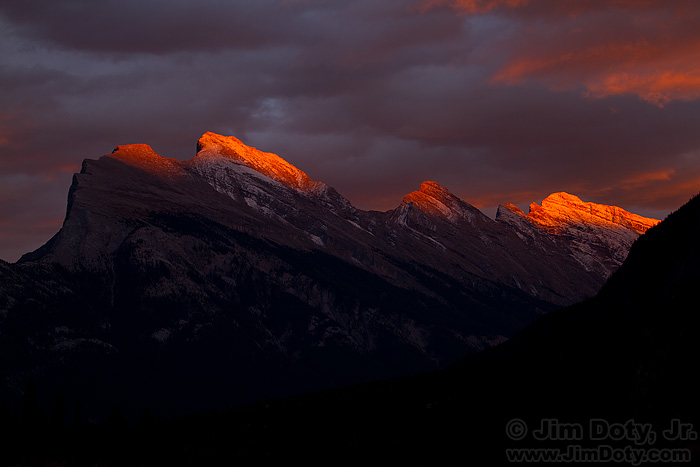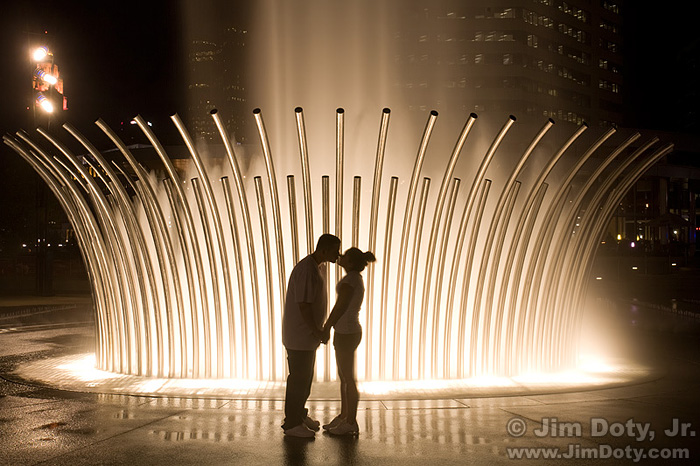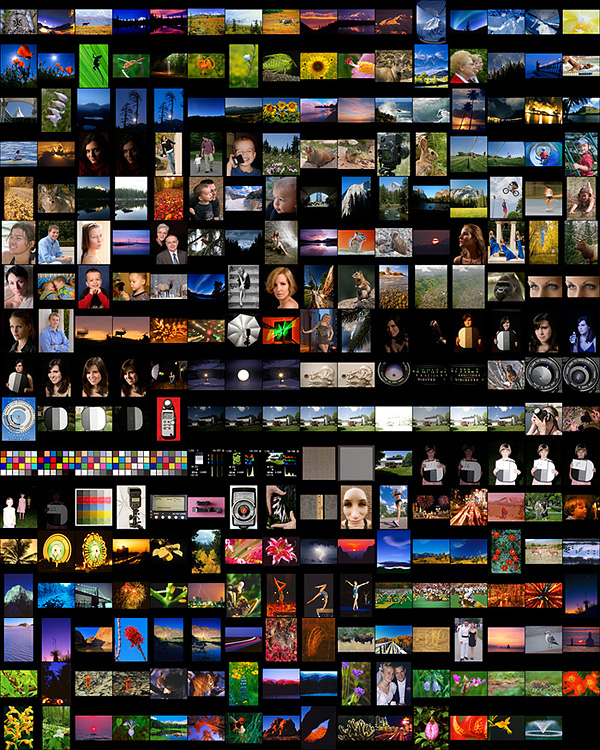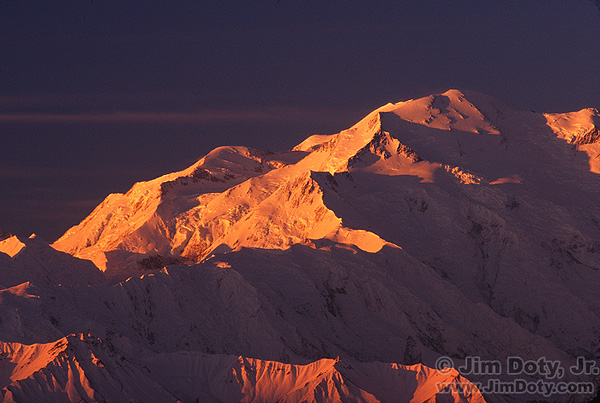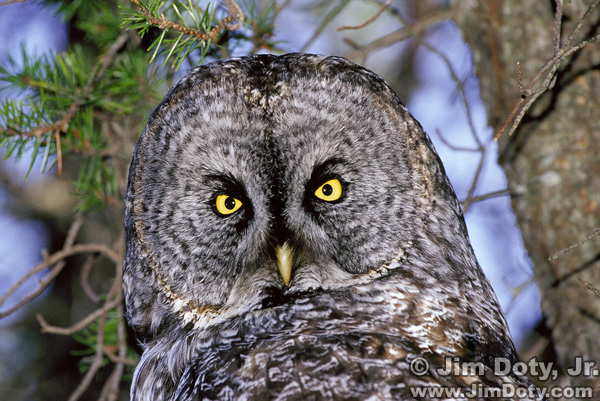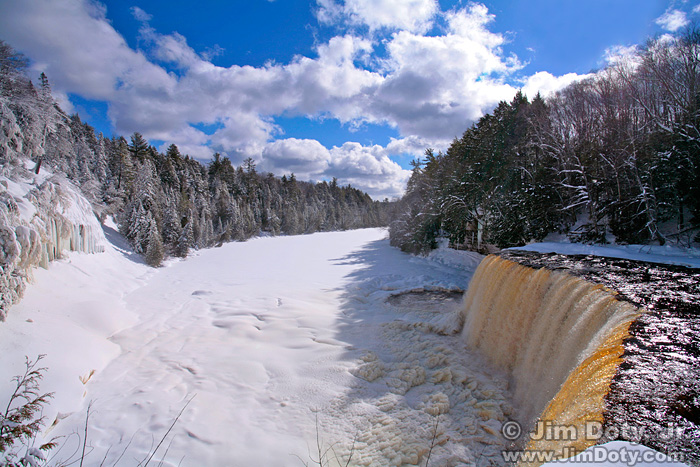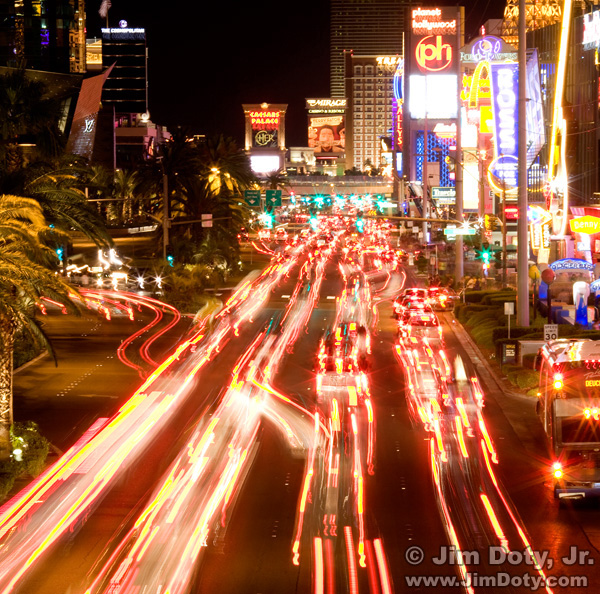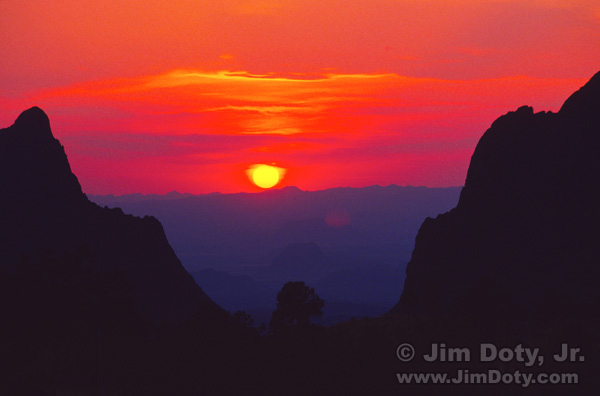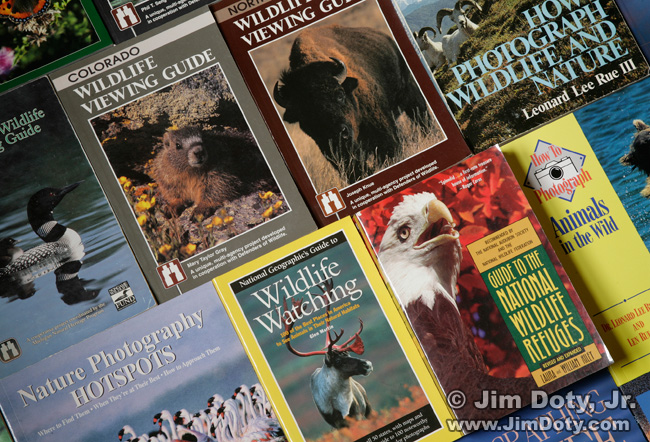When I left home headed for Northern California I had no intentions of being in Southern Utah. By the time I reached Denver, snow in the forecast for N. Utah, Nevada, and the mountain passes in N. California made a detour much more appealing than fighting snow on I-80, especially since I have never been to the spectacular parks and monuments in Southern Utah.
Category Archives: Photo Locations
How To Photograph City Lights at Night From a Commercial Jet
There are serious challenges to photographing city lights at night from a commercial jet. Here are some suggestions that will help.
Metering Evening Winter Scenes
Just like metering daytime winter scenes, the key to metering evening winter scenes is knowing what to meter and deciding how much exposure compensation to use.
Metering Snowy Winter Scenes
Metering for scenes with a lot of snow can be tricky since the snow fools the camera meter. I see a lot of winter photos online with gray, underexposed snow, which means the camera meter did what it was designed to do and the camera owner didn’t know how to use exposure compensation. The solution is quite simple provided you know what to do.
POTD: Vermilion Lakes Sunset
Bad weather can lead to great sunsets. It was rainy day with a leaden gray sky when I picked up my coat, photo backpack and tripod to leave the “fireplace room” at the bed and breakfast in Banff. Some of the other guests asked if I really expected to get any good pictures in the bad weather. “I hope so!”
POTD: Last Light on Mount Rundle
This is a lesson in patience. Most photographers missed this sunset. I was on location four separate evenings hoping to capture stunning sunset light on Mount Rundle. It only happened once. It also helps to know where to be, when, and how to meter in high contrast lighting situations.
How to Find the Fall Color Peak at the Best Locations
Fall color will soon be sweeping the country. To make the most of it, you want to be at the right place at the right time. With some help from the internet, I will help you find the best fall color locations and arrive at the peak of the season
Fountain Kiss, Bicentennial Park
I was working on my last photo of the day for the “Picture Today, Inspire Tomorrow” project on May 15 at ADAY.org (more info here). When I planned my day, I wanted to end up at the fountain at the new Bicentennial Park in Columbus, Ohio. It is a great place to take pictures. As I visualized the image ahead of time, children would be playing at the fountain, creating blurry silhouettes. I already have a “children in the fountain” photo in my files, but all photos had to be taken on May 15.
Best Books: Desert Solitaire by Edward Abbey
If you are heading for Arches and Canyonlands National Parks (and you should if you are a photographer), I highly recommend you read Desert Solitaire by Edward Abbey before you go. No other book will give you quite the feel that Abbey does for what this harsh and unforgiving land was like more than a half century ago before it became more accessible to the average tourist.
Photography in Arches National Park
Arches National Park is an iconic destination for both tourists and photographers. It is one of the more spectacular locations in North America with a wealth of photographic possibilities in Arches and other nearby parks.
All 271 Book Photos
The digital contact sheet above has all 271 photos in Digital Photography Exposure for Dummies. Curious about the statistical breakdown of the photos, I gathered them all together and went through them one by one to make note of the location, the type of photo (portrait, landscape, etc), camera used (film or digital), and the year each photo was taken. Obviously, the photos reflect the content of the book. You would expect to see wildlife photos in a chapter on wildlife photography. But I thought the photos might say something about my general photographic preferences as well.
Denali: Capturing Great Morning Light
Mastery of light is a key to great photography of any kind. Anticipating great light in order to be in the right place at the right time is one of the keys to great landscape photography. I was searching for great light on Denali (or Mt. McKinley as it is called in the lower 48).
Q & A: Great Gray Owls and Birding at Whitefish Point
My photo of a Great Gray Owl and the story behind the photo inspired the e-mail question below. My answer follows, along with some additional information, visuals, and links.
POTD: Last Light on El Capitan
Yosemite National Park is a spectacular place to visit in any season of the year. If you are there in the winter, the ideal time to create images is right after a snowfall when snow coats the trees.
POTD: Upper Tahquamenon Falls, Winter
Tahquamenon Falls State Park in Michigan’s Upper Peninsula is a great place to visit any time of the year, including winter. This view from the lip of the Upper Falls looks down the Gorge at the snow and ice covered Tahquamenon River.
POTD: “The Strip”, Las Vegas
With long shutter speeds, you can capture the passage of time in a way that your “instant snapshot eyes” can’t. Your eyes and brain are capturing a rapid series of individual images and turning them into motion, while a still camera can capture one very long image. You can create images with a camera that your unaided eyes can’t create.
Photo of the Day: Bryce Canyon at Sunrise
Bryce Canyon in southern Utah is one of the most spectacular places on the planet and I finally found a chance to stop there on a trip to California. It was late April and I was hoping for snow. I arrived about sunset (with no snow on the ground) and I had to leave the next morning after only a few hours of shooting time. Mother Nature must have smiled. There was a dusting of snow overnight.
Finding the Peak of Fall Color
Fall color is sweeping the country. To make the most of it, you want to be at the right place at the right time. Fortunately, that’s not hard to do.
Take the Photo Anyway!
You have your photo all planned out long before you click the shutter, but the moment arrives and things don’t work out like you had envisioned them. What do you do? Maybe you should take the photo anyway.
Photography in Big Bend
I prefer cool breezes, mountains, pine-scented air, and cold mountain lakes or streams, so I was totally surprised when I fell in love with Big Bend National Park. Located in the hot, Chihuahuan Desert in southwest Texas, it is the opposite of where I prefer to be, both personally, and photographically – or so I thought. But my first trip to Big Bend changed all of that.
Finding Wildlife
The first step to photographing wildlife is finding wildlife. In the case of common wildlife, that’s easy. If you are looking for squirrels you may not need to look any farther than your own back yard. But if you want to photograph something a little more exotic, like Chachalacas or Green Jays, you need to know where to look for them (the southern tip of Texas).
FALL COLOR REPORTS
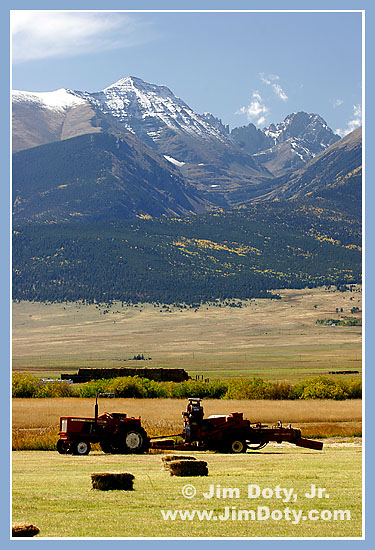
Wet Mountain Valley, Marble Mountain, Crestone Needle, and Crestone Peak (Sangre De Cristos Range), Colorado. Photo © Jim Doty Jr.
The air is getting cooler and fall is on its way (if it hasn’t already arrived, like in Alaska). It is a great time to take pictures. Fall colors will begin appearing in the northern U.S. and at higher elevations and work its way south and down to lower elevations.
At Denali National Park in Alaska, fall color is well under way in late August, and wintry conditions can arrive by early September.
In Colorado, fall color starts up north at the higher elevations in mid-September and works its way south through early October. At Bear Lake in Rocky Mountain National PArk, the aspen usually peak in mid to late September. When the aspen at Bear Lake at bare in early October, the aspen at lower elevations in the Park should be be hitting their peak. In southern and southwest Colorado, the aspen should be a pale green in late September and usually hit their golden peak in the first 10 days of October.
In Michigan, fall color starts in the U.P. in early October and works its way south through the rest of October.
Weather conditions can change the usual fall color season in any part of the country, and the quality of the color can change from year to year. I timed my last trip to southern Colorado for the peak color season but the leaves weren’t at their best when they turned, and heavy rain, snow, and high winds combined to strip the trees early. No aspens for me down south but I was able to catch a few patches of color at lower elevations up north.
“Leaf peepers” can keep track of conditions and plan their fall color trips by keeping a close eye on a variety of web sites.
I have a long list of fall color web sites for much of the U.S. on this page. Fall color web sites become active at various times during the fall.
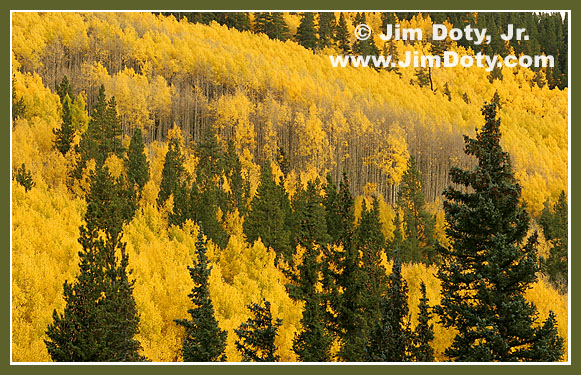
Marshall Pass, Colorado. Photo © Jim Doty Jr.
THORNE SWIFT NATURE PRESERVE

“Showy Ladyslipper”, Thorne Swift Nature Preserve, Michigan.
Photo copyright (c) Jim Doty, Jr.
In my travels last week I stopped at Thorne Swift Nature Preserve in Northern Michigan, not far from Harbor Springs. This little gem of a wilderness is almost always a nice place for intimate (small scale) nature photography from May through fall. My article on Thorne Swift is here.

